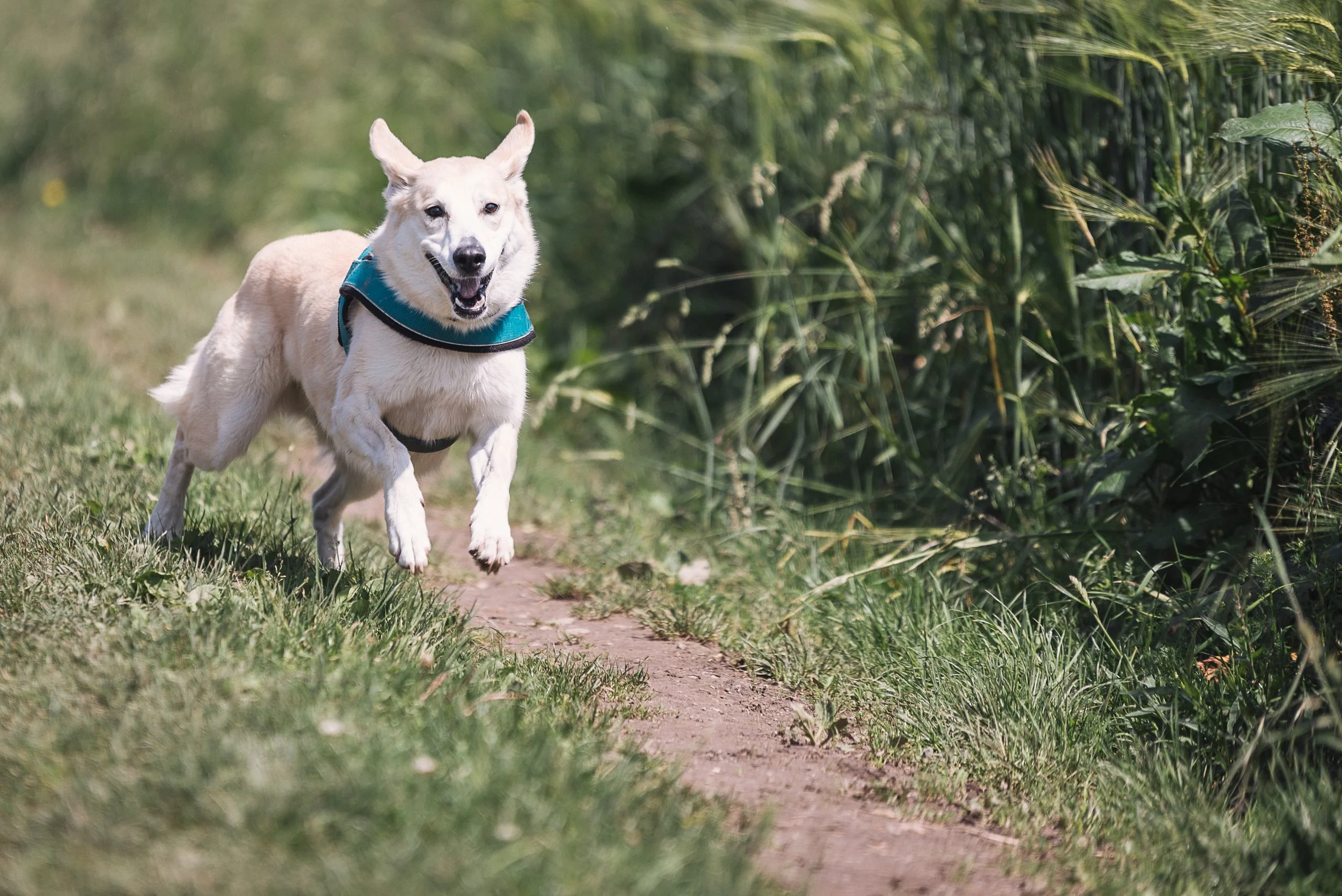Working With Aggression in Dogs is Possible - Make Sure You Do it Right
/Aggression in dogs is a widely misunderstood topic that can be heartbreaking and dangerous to live with. Today I'll discuss what aggression means (compared to what people think it means), steps you can take to prevent it, and tips for working with it. A disclaimer at the beginning because this is important: ALWAYS WORK WITH A PROFESSIONAL WHEN DEALING WITH AGGRESSION CASES. There's a reason that's in bold allcaps.
Aggression isn't a personality trait.
Aggression is commonly used to describe the personality of a dog, but technically that's incorrect. Aggression describes a set of behaviors. Barking, snarling, lunging, biting, snapping, piloerection (raised hackles), and more can all be aggressive behaviors. Labeling the dog that engages in aggressive behaviors as "aggressive" doesn't help anyone. Aggressive behaviors serve a purpose, and that purpose must be understood to "fix" the behavior.
Aggressive behaviors are used to make unpleasant things stop or go away. They are driven by various emotional states, typically fear (an argument could be made that "always fear" is appropriate, I wouldn't disagree). Pain (or the fear of pain) is a typical trigger for aggressive behavior as well. Generalized anxiety can heighten fearfulness and therefore increase aggressive behavior as well. Because pain and anxiety disorders are on the list, it's always important to have a medical examination done to look for physical causes of aggression before attempting any behavioral work, especially for sudden onset (ie - "my dog has been fine for years, and all of a sudden started biting when..."). Your vet can assess what specific tests are appropriate.
Aggressive behaviors have complex triggers.
Some aggressive behaviors can have innate triggers, like pain. Other times aggressive behaviors can be respondent (meaning they were learned through association; example: dog learns that a hand near their face typically means they get hit, so they bite a hand that comes near their face because they associate hands with pain). Aggressive behaviors can even be conditioned using consequences (if a snarl makes you go away when I don't like you, I'm more likely to snarl in the future to get what I want). Understanding those triggers will be key to addressing the undesired reactions.
Addressing the issue.
One thing that must be kept in mind with aggression is the underlying aspect of fear that is almost always present; fear of pain, fear of losing a resource, fear of the unknown, etc. When you keep that in mind, it becomes obvious why punishment techniques simply aren't effective at long-term aggression solutions. The first serious bite case I ever took on involved a dog that had been corrected with a prong collar any time it growled at people. The dog stopped growling (because punishment works), but the underlying cause of the aggressive behavior was never addressed. It is possible the fear was intensified and justified (if I see a person, my neck hurts - people are scary). This resulted in a dog that was afraid of being around strangers and unable to communicate that fear without being punished. When he bit, the victim's hand required three reconstructive surgeries.
That story exemplifies what is necessary for addressing aggressive behaviors. We MUST understand the underlying emotional triggers and work on new associations. We must also work on management of the undesired behaviors. We must also take action to teach new desirable behaviors to replace the undesired ones. An effective strategy for reducing aggressive behaviors should include at a minimum these three aspects:
- Use management to prevent undesired behavior. Muzzles to prevent biting, leashes to restrict access to triggers, route changes on walks to avoid triggers, etc. This minimizes those times the dog learns that it's aggressive behaviors work to get the results it wants.
- Use of classical conditioning methods to change emotional associations. The triggers must be presented at a level that is below the dog's threshold and paired with a highly desirable stimulus. There are many examples, but I discussed the concept in my article about noise sensitivity - thunder makes chicken fall from the sky, so thunder must not be so bad. A purely classical approach means that we wouldn't care what the dog is doing. They get the goods whenever the trigger is present. That is great in the beginning, but I always like to include in my plans...
- An alternative behavior that gets the desired outcome. Perhaps teach the dog that it doesn't need to growl or snarl to get someone to go away by teaching it that people will go away if they hide behind your legs. That's just one possibility, there are as many possible options here for alternative behaviors as there are dogs in the world.
Again, always implement a plan under the guidance of a professional, but do your due diligence. Ensure that anyone you're hiring understands the difference between punishing a behavior and working at the cause of the behavior. Ask them what their overall plan would look like (they don't need to give nitty-gritty details), and make sure it includes some version of the three aspects I described.
Aggressive behaviors are workable. There is hope.
Benjamin is the owner of Good Doggy Saratoga. You can follow him on Facebook.
If you liked this article, please like and share below. You can also subscribe to receive blog updates in your email.





